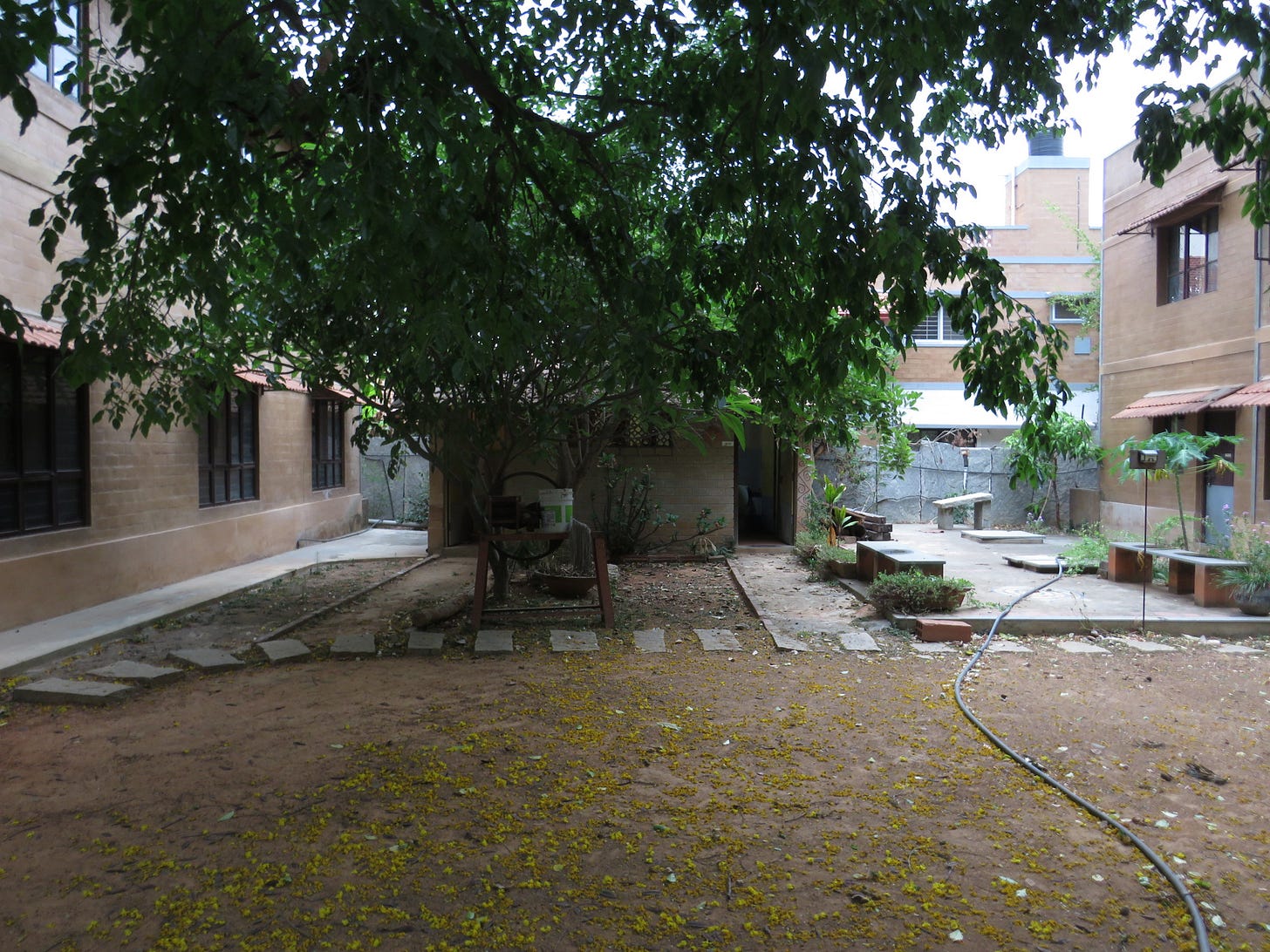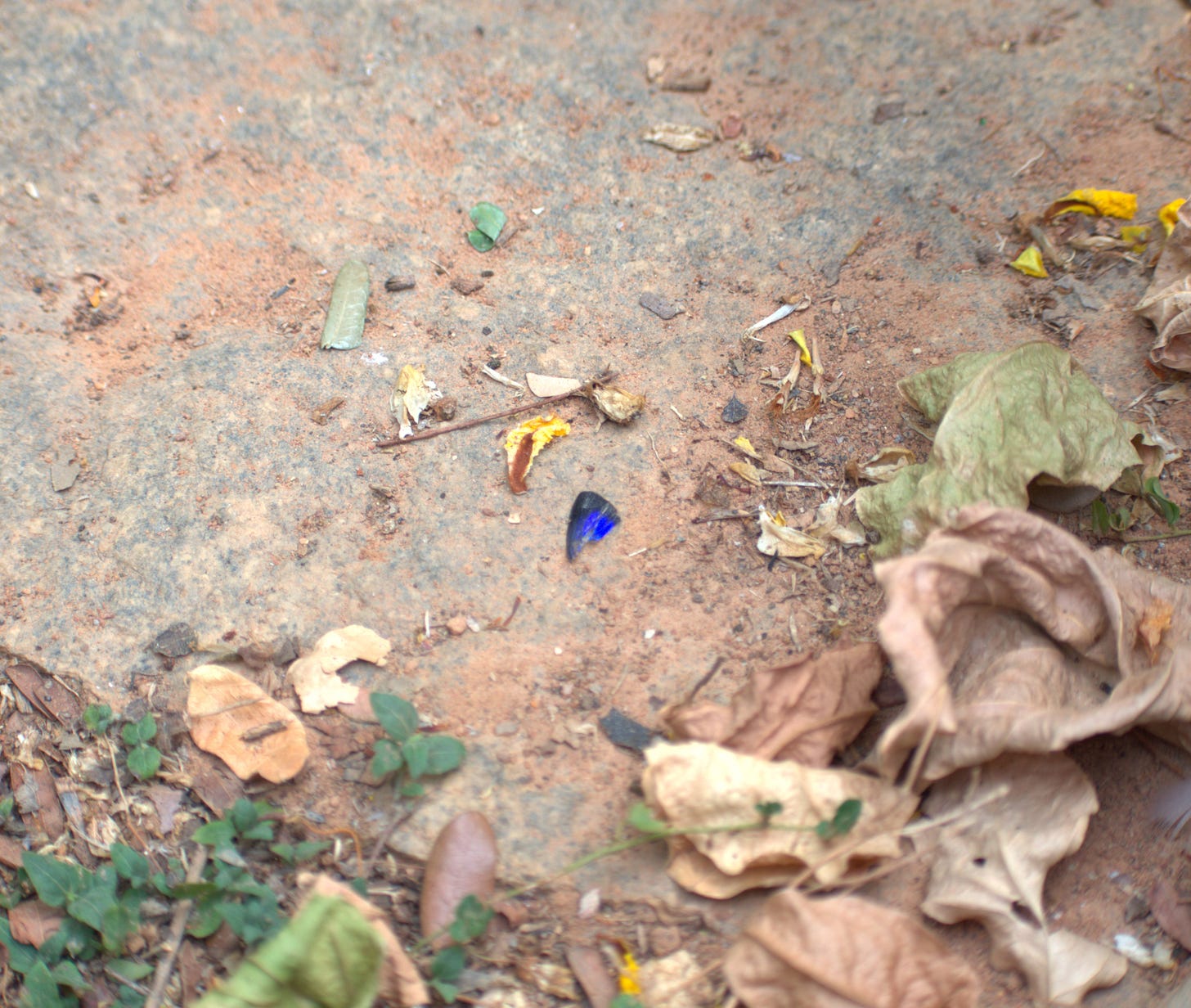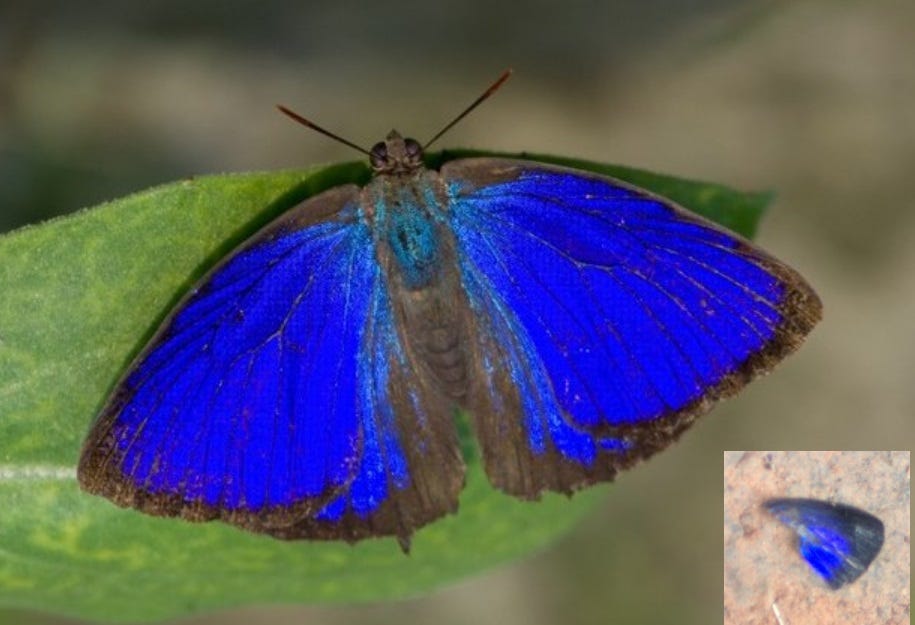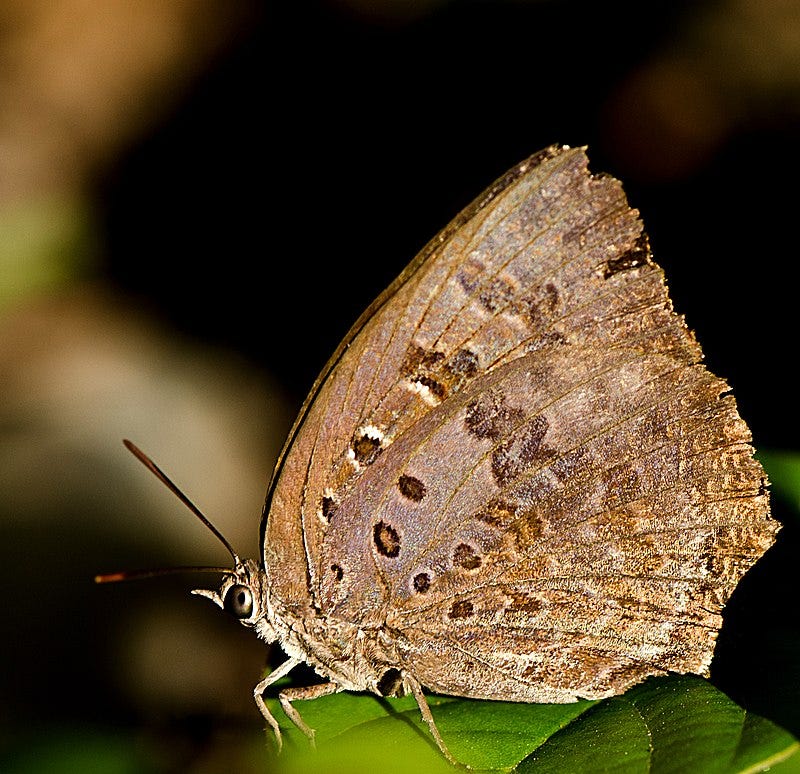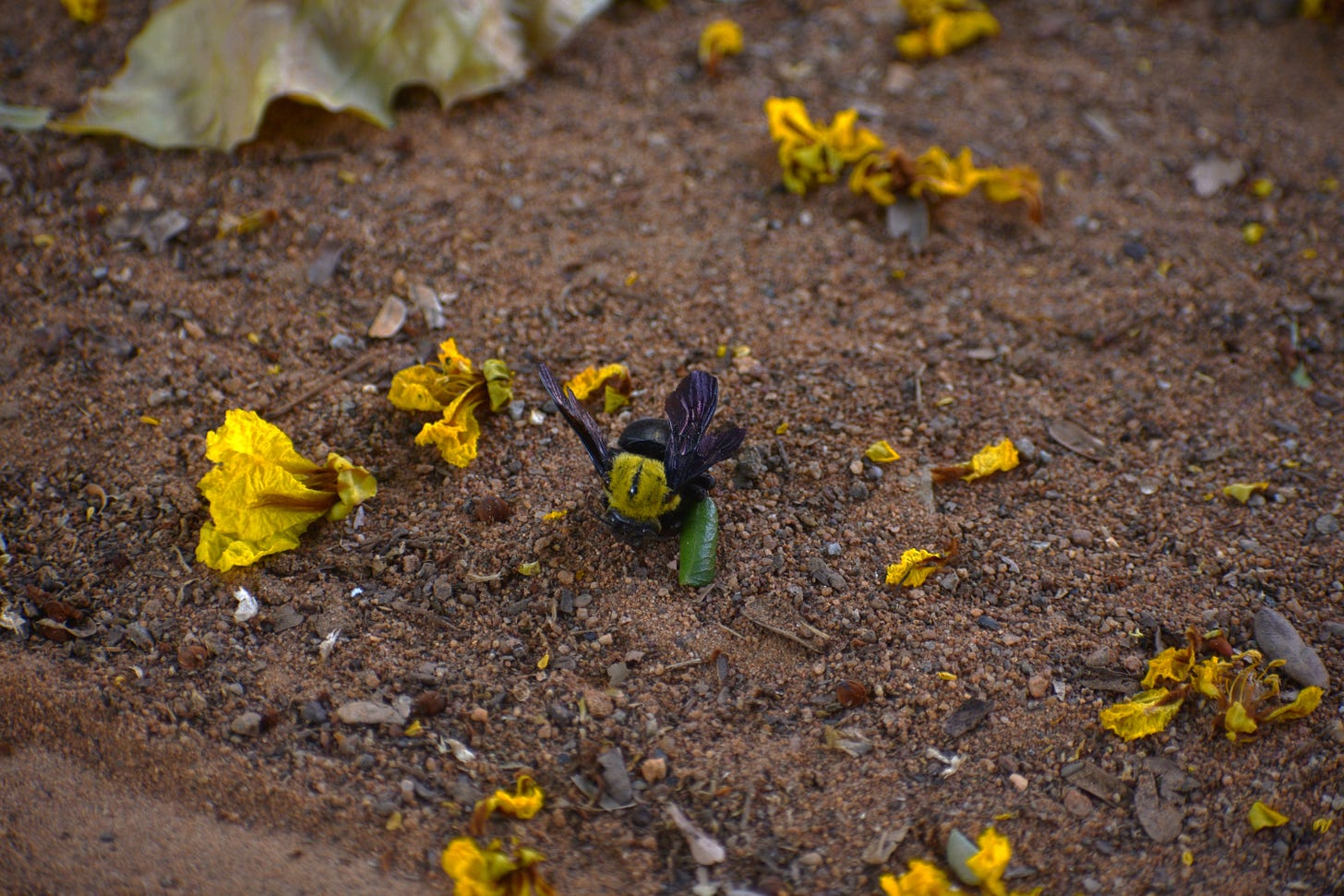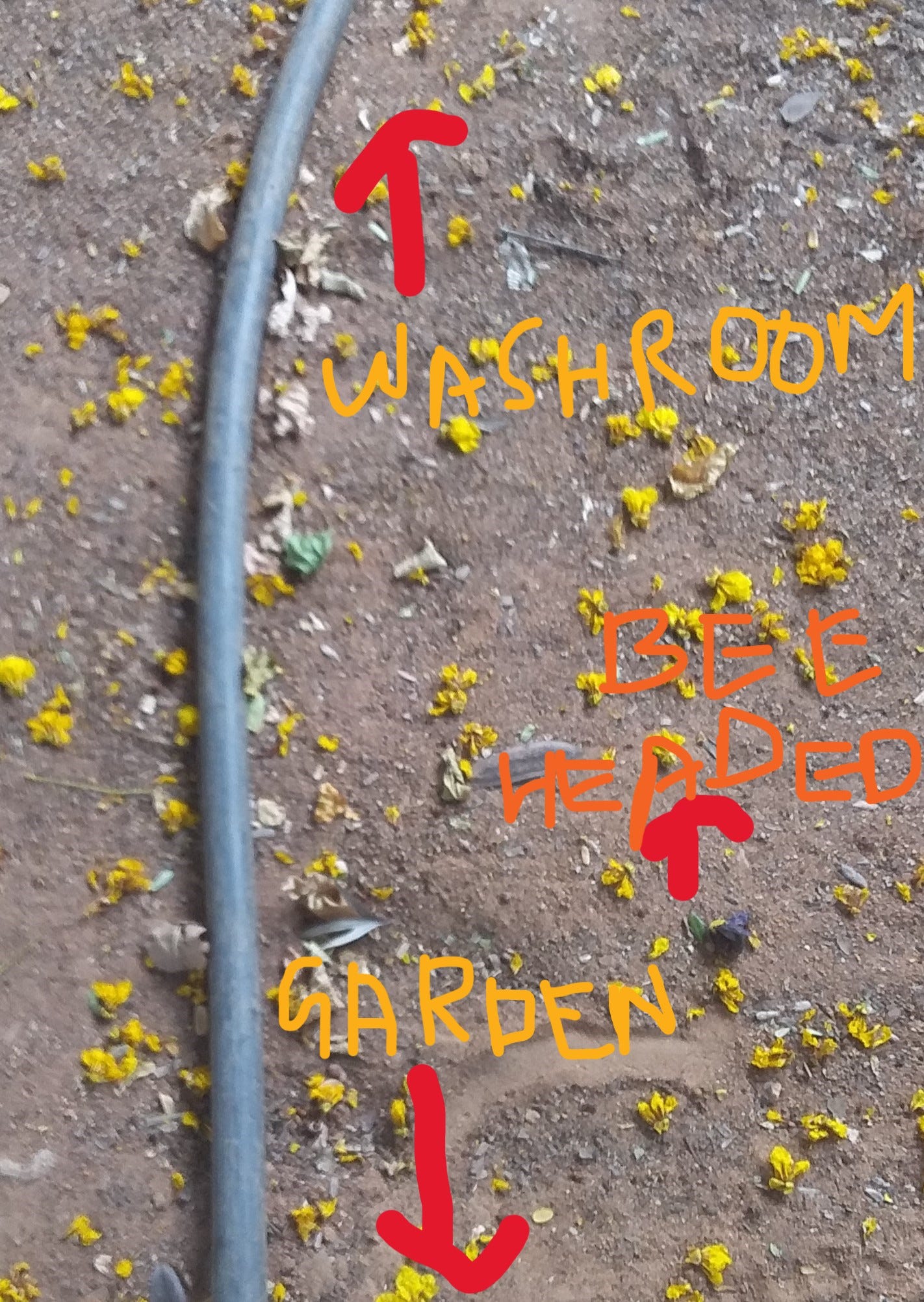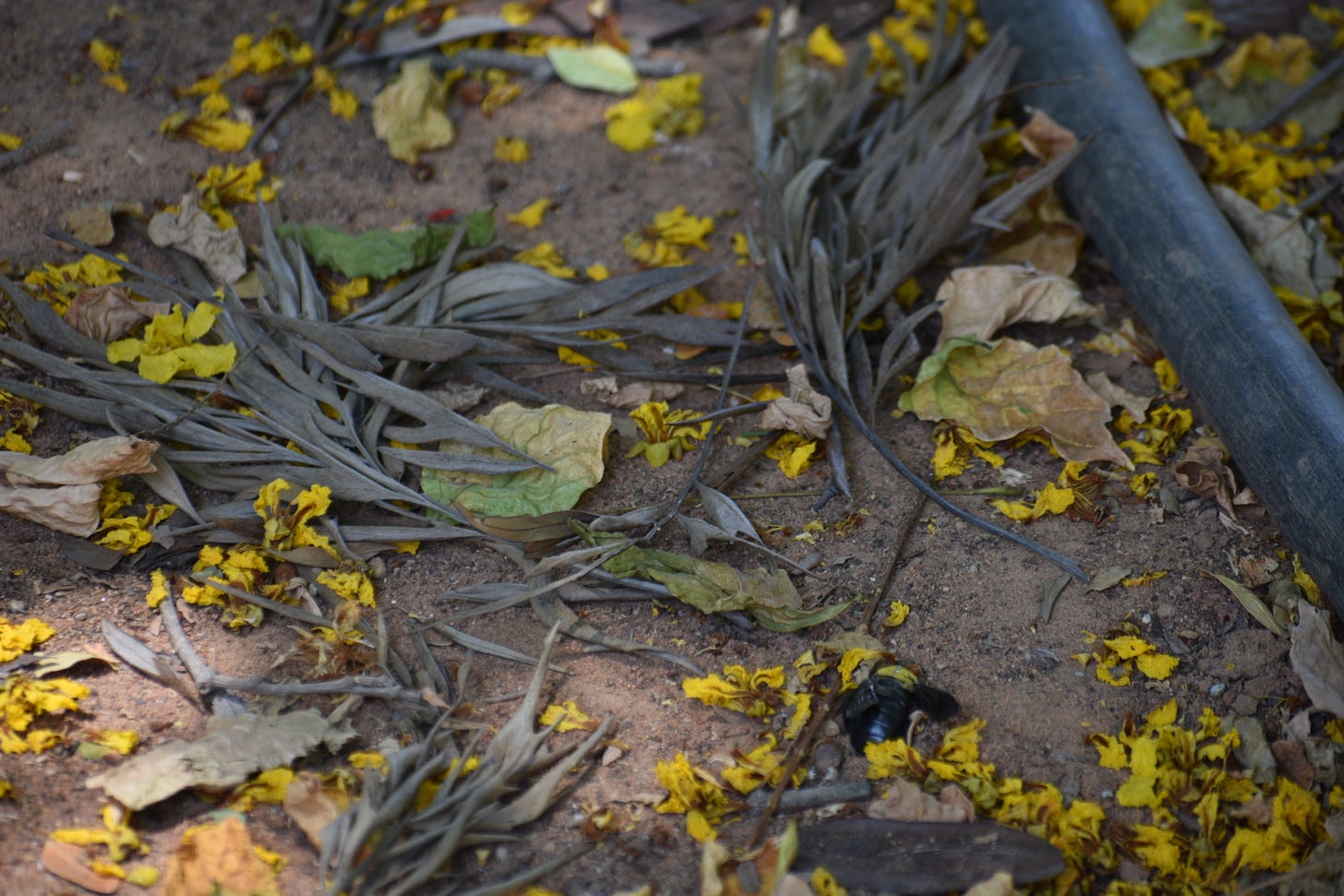Bymokesh Pakshi Ep 3 - Where do bees go to die?
Investigating the one unexpected landing spot of fallen bees
The journey from Bhoomi office to the hostel, a journey I like to cover, partially by walking on the stone slabs laid from the office up until Ananda Hall. Walking on the slabs reminds me of a time when I, along with my friends, would walk on thin compound walls.
Ananda Hall has been a home in many ways for the past decade or so. Home, not just for me, but also for hundreds of oddballs like and unlike me, who were desperately seeking a sense of community. I would be doing the space injustice if I were to call it merely the space where sessions are conducted on sustainability and holistic education. It has meant far more than that to me, a space for building deep connection with myself, others and Nature.
When I first arrived at Bhoomi though, it wasn’t Ananda hall that felt like ‘home’, it was the Bhoomi hostel. After working hours, most of my time was spent in the hostel - sitting in the verandah reading books in the evening and finding different ways to evade mosquitoes and lizards once inside my room. When I joined Bhoomi more than a decade ago, I spent almost a year alone in the hostel. Well, I was not exactly alone, there were fruit bats, frogs and garden lizards as my companions. The fruit bats used to raid the water apple tree and ‘hung out’ near the hostel. They are now gone. So are the garden lizards that used to perch on the stone slab near the hostel. I am sure there were birds, insects and other beings, only that I had failed to notice them then. How do trees, animals, birds and insects feel when humans fail to even acknowledge their presence?
Just as in life, it’s the space between homes that can be a source of discomfort. In both time and space. And here is one such space for me. The one between Ananda Hall (left) and Bhoomi Hostel (right). I identify this space as the ‘Unknown’. The building in the middle is the washroom. There’s a defunct machine in front of it which reminds me simultaneously of a sugarcane juice extractor and a serial killer weapon. Behind the building are trees that have been taken over by wildly growing Mexican sunflowers. A pipe that goes from the sump next to the washroom all the way to the edge of the garden reminds me of a very long flatworm. After sunset, the space becomes eerie, the solar lamp (at the extreme right in the pic) barely mustering enough light to make itself visible.
The fact that I have grown with the conditioning that I should never be seen around a ‘girl’s toilet’ doesn’t help. In fact, I do not like to enter the men’s washroom here either. There are at least eight baby lizards per square inch in there and enough cobwebs to put any Bhoot Bangla to shame. All the creepy crawlies, whizzing around this place, while I try to take a whiz, spook me no end.
I quickly wash my hands before the two baby lizards chilling in the wash basin have time to respond to any of my stimuli. I trot out of the washroom and quickly move towards one of my two ‘homes’. I see something on the pathway out of the washroom that makes me believe that I am not the only one who feels unsafe around here.
I look down and I find a part of a wing. It looks like a butterfly. I offer my condolences to the butterfly with a short prayer, an RIP for this ripped up butterfly. I haven’t seen too many blue butterflies in the campus that have a black edge to them, so I look up the book compiled by Yuvan and Bhoomi on butterflies and birds within the campus. Nada.
My search online leads me to this. The Large Oakblue.
Could the wing be of a Large Oakblue? A butterfly that has a blue upperside but an orange underside?
There was only one way to find out. To turn over the wing that I had found. But I had forgotten to do that when I found it. I had taken a photograph of the wing and walked on. What a rookie detective mistake! I try to go back and look for it where I had found it but to no avail. Note to future self: Pick up any evidence found, hold it gently and examine it thoroughly, smell it if needed and keep it back where it was found. Do not simply photograph what you see and walk away.
I walk on because something else catches my attention.
I take a twig and try to help the bee back on its legs. It doesn’t work. It keeps squirming and flailing about, desperately looking to get its wings to function again. I wonder if a bee knows when it’s about to die. I’ve heard of humans and animals that know when it’s time and refuse to eat or drink anything. How does a bee die? Stroke? Cardiac arrest? Exhaustion or disease ? Before I can even begin to think of answers to the questions, a pack of ants arrive to carry the bee away. I can’t conclusively ascertain the reason for the bee’s death, but it is said that when close to dying, they cling on to the flowers. A final embrace with what nourished them.
And just when I think I had enough sightings of dead wings for a day, I notice what looks like a heavyweight gothic version of the honey bee. All black, except its fuzzy yellow crown. It looks like a carpenter bee, but I’m unsure if it’s a male or a female. I know this is a favourite spot for bees as I’ve seen them in bunches on the Honge tree when it flowers. Perhaps they have been feasting during the blooming of the Copper Pod tree right above.
Where do bees go to die? More precisely, where was this bee headed? I notice that its head faced away from the garden. I keep walking in the direction of the head and I find myself standing right in front of the washroom. I scan the inside of the washroom and find no evidence of what could be its home.
Reluctantly, I scan the outside of the washroom, praying that no one notices me circling around it with a camera in my hand. What I find on the top of the logs that support the structure of the roof are some perfectly shaped circular holes. The holes are so symmetrical that I would like to believe they were made during the construction of the building. But then I find that the holes have been built in series, like those on a flute. And some of the holes are still works in progress. All the evidence points to carpenter bees.
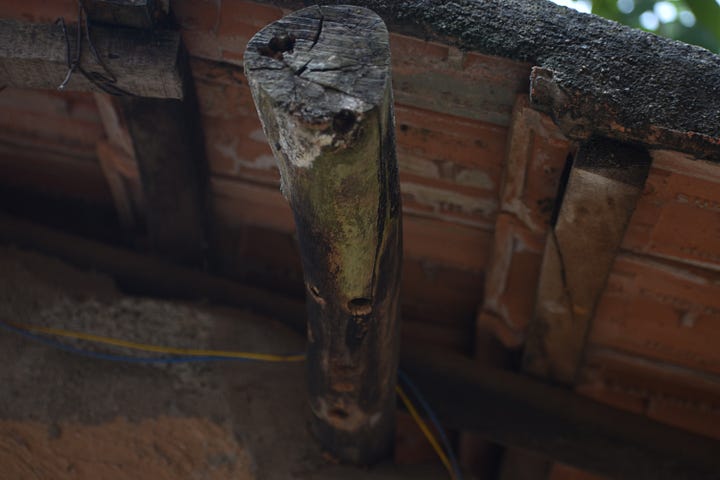
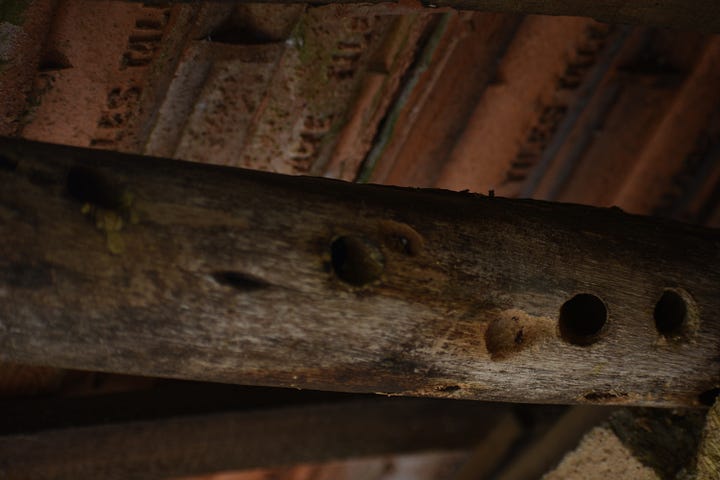
To be sure, I wait for one of them to come near the log to confirm. These bees are known to patrol their nests. I wait patiently near the washroom. I hear a strong buzz that zips past my ears. I duck to save myself, only to realise later that carpenter bees are not really known to be aggressive and that the males don’t have a sting on them. Lucky me. I soon spot one near one of the logs, and I can see holes very close to where it is sitting.



Why hadn’t I noticed these bees earlier near the washroom? Was it the alienness and the unknown quality of the space that made me ignore what was around it? Perhaps.
Did this bee recently lose one of its loved ones? Perhaps the bee lying not far away from the washroom.
Even though the bee that I found couldn’t make its way back home to its family, it was given a proper farewell by everyone around it. The Copper Pod tree showered its love by dropping its flowers, the Honge tree and the Silver Oak tree sent its condolences in the form of fallen leaves, and various insects and bugs paid the bee a final visit.
I have an inkling as to where bees go to die, and that’s wherever it feels like home.
Copyedited by Pipson aka Pipbhai, fact checked by Rakesh aka Mowgli and illustrated by Urvi aka UrVi RaYs.




